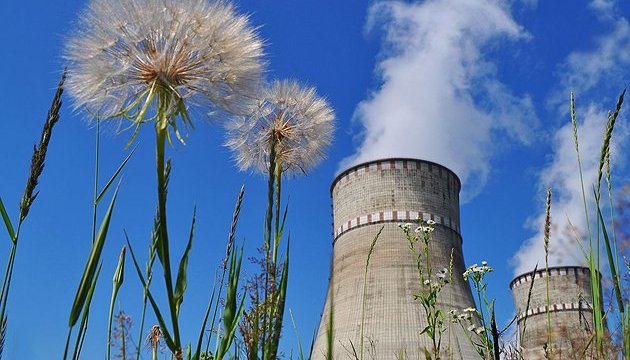УДК 537.523.9 • Issue 4 (32) / 2020 • 65-70 pages
Boshko I., Kondratenko I., Zabulonov Yu., Charnyi D., Onanko Yu., Marynin A., Krasnoholovets V.
Boshko I., Ph. D. (Tech.), Institute of Electrodynamics, National Academy of Science of Ukraine, ORCID: 0000-0002-7955-246X, ws77@ukr.net
Kondratenko I., D.Sc. (Tech.), Cor. Member of the National Academy of Sciences of Ukraine, Institute of Electrodynamics, National Academy of Science of Ukraine, 56 Peremohy St., UA-03057 Kyiv, Ukraine, e-mail: dep7ied@ukr.net, ORCID: 0000-0003-1914-1383
Zabulonov Yu.L. D.Sc. (Tech.), Cor. Member of the National Academy of Sciences of Ukraine, Professor, State Institution «The Institute of Environmental Geochemistry of National Academy of Sciences of Ukraine» ORCID: 0000-0002-4517-9927
Charniy D.V. D.Sc. (Tech.), Senior Researcher, State Institution «The Institute of Environmental Geochemistry of National Academy of Sciences of Ukraine», ORCID: 0000-0001-6150-6433, dmitriych10@gmail.com
Onanko Yu., Faculty of Physics, Taras Shevchenko National University of Kyiv, 4 Hlushkova Av., UA-03127 Kyiv, Ukraine, e-mail: onanko@univ.kiev.ua, ORCID: 0000-0002-7231-1188
Marynin A., D.Sc. (Tech.), National University of Food Technologies, 68 Volodymyrska St. , UA-01033 Kyiv, Ukraine, e-mail: andrii_marynin@ukr.net, ORCID: 0000-0001-6692-7472
Krasnoholovets V., Ph. D. (Ph.-Math..), Institute of Physics, National Academy of Science of Ukraine, 46 Nauky St., 02028 Kyiv, Ukraine; e-mail: krasnoh@iop.kiev.ua
Abstract
Progressive water pollution due to anthropogenic impact on the environment is one of the current problems. One of the main types of wastewater pollutants is organic matter. A relatively simple and cheap method of purifying water from them is its biological treatment with aerobic bacteria. However, there are many highly toxic organic impurities, for the decomposition of which this method is in any case in its aerobic guise is unsuitable, and anaerobic processes require too much time and temperature control of processing processes and also become questionable given the required energy costs. Such complex substances, from the point of view of their biological treatment, include organic dyes, which according to world statistics make up 15% of all harmful substances that must be neutralized before entering the aquatic ecosystem. For such waters, their pre-treatment becomes relevant, which will reduce the load on biological treatment plants by oxidation of toxic substances and a general reduction of the organic component, ie reduction of dichromate chemical oxygen demand (HSC). Water treatment with such contaminants can be carried out using technologies that use advanced oxidation processes (AOP). In our work we studied the efficiency of plasma oxidation of wastewater barrier discharge of dye manufacturers, the main component of which is technical 2,4-dinitrotoluene, as well as models of the organic component of NPP wastewater, the main component of which is a phosphate-based detergent containing South Africa – 26.8%. Water films with a thickness of ~ 0.1 mm were treated at a rate of growth of discharge voltage pulses ≈3 • 1011V / s. The energy efficiency of the pulsed barrier discharge at different modes of water treatment with different impurities of organic substances has been studied. To obtain high energy efficiency, water treatment should be carried out at such parameters of the pulse barrier discharge (energy and pulse repetition frequency) and air velocity, so that the specific energy input to the air passing through the chamber does not exceed ~ 100 / l. The highest energy yield of the pulsed barrier discharge, for wastewater samples, at specific energy inputs does not exceed ≈10J / ml.
Key words: plasma, dielectric barrier discharge, water, ozone, hydroxyl radical, dinitrotoluene, meth-ylene, surfactants, energy efficiency.
Article
Reference
- Fangmin Huang, et al.. Analysis of the degradation mechanism of methylene blue by atmospheric pressure dielectric barrier discharge plasma. Chemical Engineering Journal. 2010. Vol. 16, p. 250–256.
- Bo Jiang, et al.. Review on electrical discharge plasma technology for wastewater. Chemical Engineering Journal. 2014. No. 236, p. 348–363.
- Biljana P. Dojchinovich, et al. Manojlovich. Decolorization of reactive textile dyes using water falling film dielectric barrier discharge. Journal of Hazardous Materials. 2011. No. 192, p. 763 – 771.
- Vesna V Kovačević1, et al. Measurement of reactive species generated by dielectric barrier discharge in direct contact with water in different atmospheres. Journal Physics. D: Applied Physics. 2017. Vol. 50, p. 155205-1−155205-19
- Monica Magureanu, et al.. Decomposition of methylene blue in water using a dielectric barrier discharge: Optimization of the operating parameters. Journal of Applied Physics. 2008. No. 104, p. 103306-1–103306-7.
- Muhammad Arif Malik1, Abdul Ghaffar, Salman Akbar Malik. Water purification by electrical discharges. Plasma Sources Science and Technology. 2001. No. 10, p. 82–91.
- Shen Zhao, et al. Effect of Electrical Parameters on Energy Yield of Organic Pollutant Degradation in a Dielectric Barrier Discharge Reactor. IEEE Transactions on Plasma Science. 2017. Vol. 45, No. 6, p. 1043–1050.
- Божко І.В., та ін. Розробка комплексу для обробки води імпульсним бар’єрним розрядом. Технічна електродинаміка. 2017. No. 6, С. 80−86.
- Bozhko I.V., Serdyuk Y.V. Determination of Energy of a Pulsed Dielectric Barrier Discharge and Method for Increasing Its Efficiency. IEEE Transactions on Plasma Science. 2017. Vol. 45, No. 12, P. 3064–3069.
- C. Hibert, I., et al.. [OH(X)] measurements by resonant absorption spectroscopy in a pulsed dielectric barrier discharge. Journal of applied physics. 1999. Vol. 85, No. 10, P. 7070–7075.
- W. H. Glaze. Drinking-water treatment with ozone. Environment science technology. 1987. Vol. 21, No. 3, p. 224 –230.
- Zhang T.,et al. Photooxidative N-demethylation of methylene blue in aqueous TiO2 dispersions under UV irradiatio. Journal of Photochemistry and Photobiology A: Chemistry. 2001. Vol. 140, p. 163–172.
